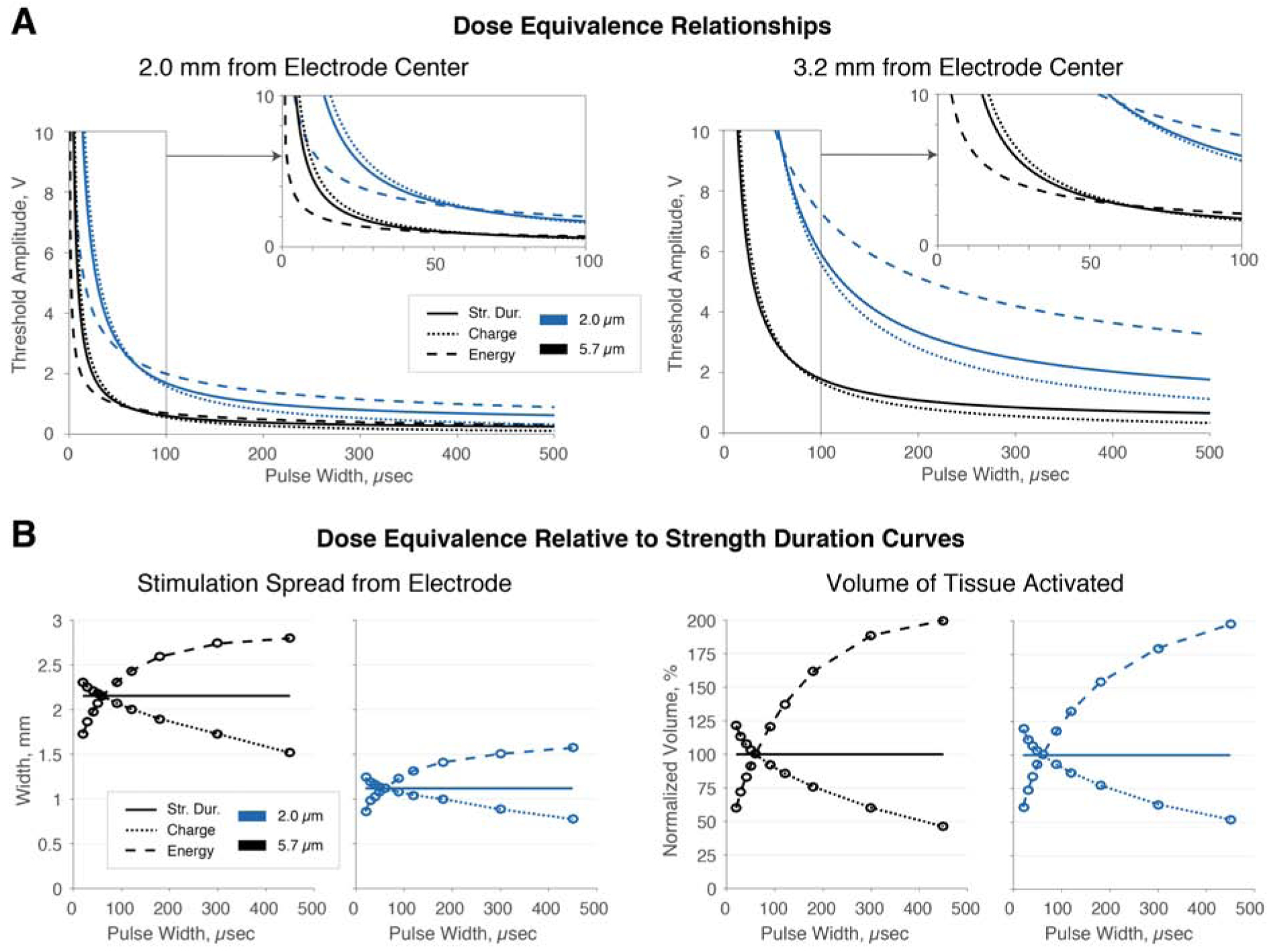Figure 4:

Comparison of strength-duration relationship, charge, and energy as equivalence metrics. A. Each of strength-duration equivalence, charge equivalence, and energy equivalence have been used as metrics to maintain equivalent neural activation when changing parameters. For short pulses, the voltage required to maintain energy equivalence is less than that required to maintain a strength-duration relationship, while the voltage required to maintain equivalent charge per pulse is greater. With long pulses, the trend reverses. B. Energy equivalence results in reduced spread of activation and VTA for short pulses and increases these for long pulses. Charge equivalence reverses this trend. Thus, both energy- and charge-equivalent parameters, with pulse width tuning, result in non-equivalent neural activation. Taken together, these results indicate that energy and charge equivalence are an inappropriate means for maintaining dose equivalence when changing pulse width and will always result in greater or reduced, never identical, spread of neural activation.
